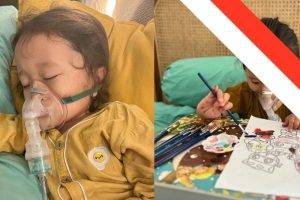Glaucoma is a disease of the eye that damages the optic nerve. Accumulation of fluid in the frontal region of the eye causes this eye condition. This collection of fluid applies stress to the eye which damages the optic nerve in the long run and causes issues related to loss of sight or in extreme cases; blindness. However, while glaucoma is one of the most frequent reason for blindness in people aged over 60, it can be avoided if treatment is sought early.
What are the types of glaucoma?
Primary open-angle glaucoma
This is the most frequently occurring type of glaucoma and is caused due to a partial blockage of the trabecular meshwork, with the corner created by the cornea and iris free. This causes increased stress in the eye which eventually damages the optic nerve. Progression of primary open-angle glaucoma is pretty slow, therefore the patient might be asymptomatic and only present with slight visual deterioration.
Some individuals are more predisposed to glaucoma if their optic nerves are more sensitive to raised eye pressure. Routine eye check-ups are essential to look for initial signs of injury or damage to the optic nerve.
Closed-angle glaucoma
This is also known as narrow-angle glaucoma and is common among Asians. There are 2 types of closed-angle glaucoma:
- Acute angle-closure glaucoma: happens suddenly, and is considered a medical emergency
- Chronic angle-closure glaucoma: happens over time
Closed-angle glaucoma happens when the iris either narrows or obstructs the drainage angle created by the cornea and iris, which will increase the pressure on the eye and cause abrupt and sharp pain in the eye.
What are the signs and symptoms?
The associated signs and symptoms can be summarised as:
Open-angle glaucoma
The majority of people with open-angle glaucoma don’t present with clinical manifestations. Symptoms can appear over time and they include:
- Variable blocked spots in the inner or outer eyesight, and mostly occurs in both eyes
- Tunnel vision in the advanced phase
Closed-angle glaucoma
Unexpected blockage to the drainage of aqueous humour leads to the signs and symptoms. Some of these include:
- Intense eye pains and headaches
- Eye redness
- Diminished vision or dim eyesight
- Noticing halos or rings of colour around light sources
Acute angle-closure glaucoma is a medical crisis and should be treated promptly. If it is not treated urgently, it can progress to blindness. If you experience any of the above symptoms, consult your physician immediately.
What are the risk factors for glaucoma?
There are several risk factors associated with glaucoma, are these include:
- Over the age of 60 years
- Family history of glaucoma
- High inner eye stress (leads to increase in pressure within the eye)
- Asian, African American, Irish, Russian, or Japanese descent
- Possessing eyesight problems (near- or far-sightedness)
- Existing conditions, including diabetes, heart disease, elevated blood pressure, and blood disorders (e.g. sickle cell anaemia)
- Taking steroids for extended durations
- Physical injury to the eyes
If you have any of the above mentioned problems, regular follow-up with a physician is necessary.
How to diagnose glaucoma?
Diagnosis begins with a physician taking a complete and detailed medical history of the patient to determine the presence of any risk factors and to detect any signs and symptoms the person might be experiencing.
Complete and thorough eye testing is enough to diagnose glaucoma. A glaucoma exam is done by an optometrist or ophthalmologist who will conduct the following:
- Calculate eye tension with the help of a tonometry test
- Look at the eye’s drainage edge with gonioscopy
- Inspect the optic nerve for injury
- Examine the peripheral eyesight with the aid of a visual field test
- Compare the optic nerves
- Measure the thickness of the cornea with a pachymetry test
How to manage this condition?
Glaucoma can be managed with medication to decrease eye pressure or through surgical intervention to cease the advancement of injury.
1. Eye drops
These are the first things an ophthalmologist will prescribe. Eyedrops help lessen eye pressure by helping the flow of fluid from the eye or by minimising the production of fluid. Some examples include:
- Prostaglandins
These decrease eye stress by enhancing the flow of the fluid in the eye (aqueous hummer). Some unwanted side effects include minor red eye and eye pain, blackening of the iris, and blurred vision.
- Beta-blockers
These lower the tension in the eye by lowering the production of fluid in the eye. Likely side effects are difficulty breathing, slowing of heart rate and decreased blood pressure.
- Carbonic anhydrase inhibitors
These drugs reduce the production of fluid in the eyes. Possible side effects include experiencing a metallic taste in the mouth and an increase in the frequency of urination.
Some of the above-mentioned eye drops are absorbed into the bloodstream and can cause some systemic side effects. To lessen the rate of absorption into the bloodstream, it is recommended that the eyes be closed for one to two minutes after the eye drops have been used.
2. Oral medications
If eye drops are not sufficient to decrease eye stress, physicians normally prescribe oral medications such as a carbonic anhydrase inhibitor. The side effects experienced with such oral medication is the same as with eye drops. In addition, a physician may also prescribe beta-blockers.
3. Laser surgery
Surgical intervention is useful to improve the flow of fluid from the eye and to end the blockage of liquid. There are two types of laser surgery:
- Trabeculoplasty – For individuals with open-angle glaucoma, using a laser to improve drainage which helps to reduce eye tension.
- Iridotomy – For individuals with acute angle-closure glaucoma, creating a small hole in the iris with help of a laser, which aids the flow of liquid to the drainage corner.
Other more invasive surgeries include trabeculectomy and minimally invasive glaucoma surgery (MIGS).
4. Treatment of Acute Closed-angle Glaucoma
Acute closed-angle glaucoma is a medical emergency that requires immediate therapy to decrease the stress in the eye. Both medications and laser surgery are helpful and are required in this condition. Medication is usually tried first, to back-pedal the closed angle. However, in the event that medication does not work, laser peripheral iridotomy surgery can be helpful.
Closing words
Regular follow-ups with your ophthalmologist is essential to help identify the signs of glaucoma early on and to receive proper therapy before it progresses to eyesight damage.
Read about other eye conditions on our other MCA pages!











